In 2001, François-Paul Journe released the 3rd model under his brand name F.P. Journe. Whereas the first two were manual-winding movements, being the Tourbillon & Resonance, the choice to debut his 3rd as an automatic was one obviously taken in order to reach a wider audience.
He named it “Octa” and referenced it as caliber 1300 and today, 17 years after its release, it is still a very important movement and one that has been carried through many models. In fact, it would go on to form the base for every automatic Journe that he would make since 2001, and not only is the caliber called “Octa” but Journe’s automatic models all fall under the same collection which is called the “Octa” collection. This goes to emphasize again just how significant this caliber is in the world of Journe.
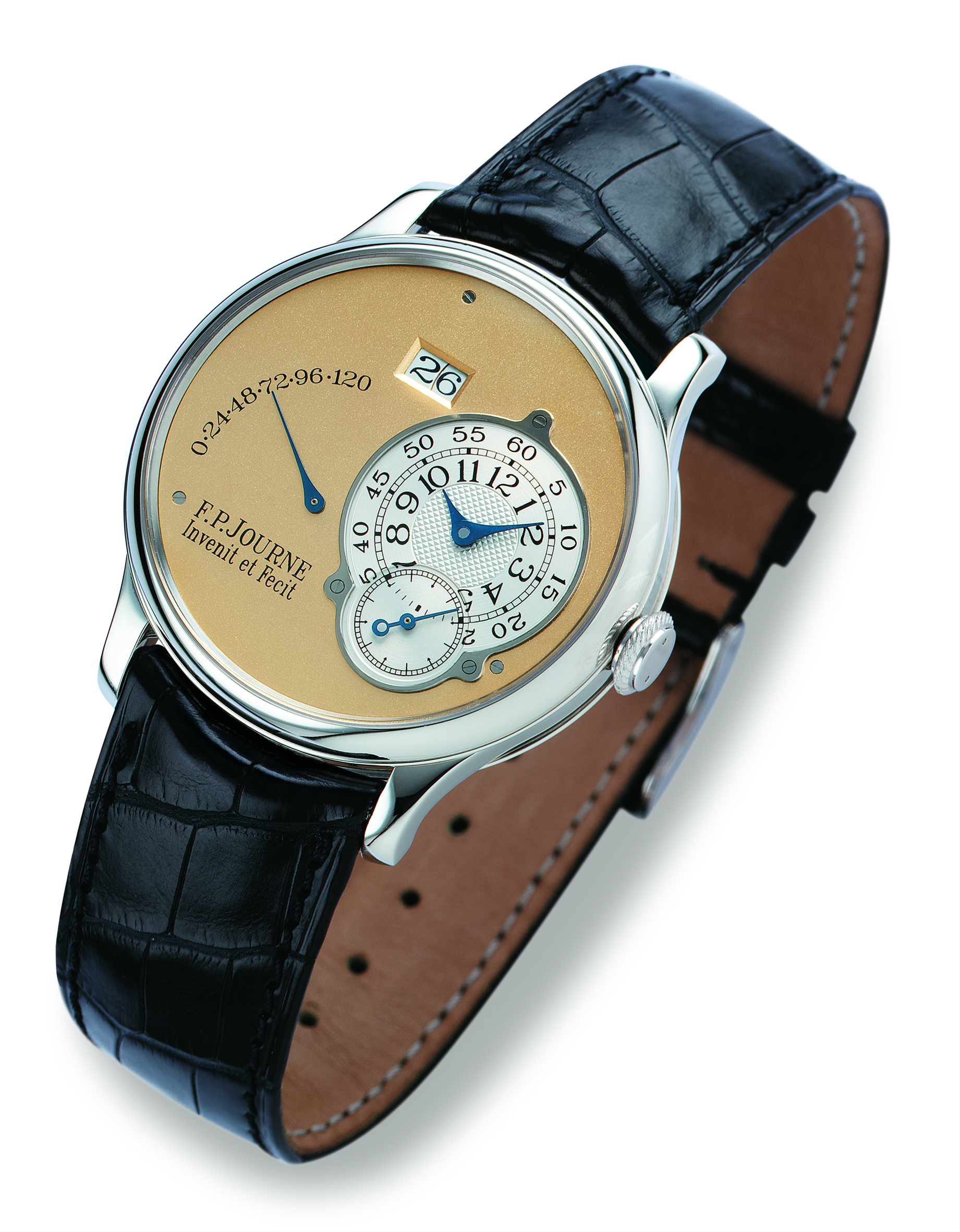
When Mr. Journe developed the idea of this caliber he aimed to achieve three particular objectives; namely autonomy, precision and practicality for both Journe and his clients.
Autonomy & Precision
Mr. Journe has previously expressed his discontent regarding watches with extremely long power reserves, citing such creations as “a serious stupidity” in watchmaking. To better understand his remark, one must calculate that achieving a long power reserve is primarily done in one of two ways.
Firstly, increase the length of the mainspring. It might sound simple but the cost to the precision is great. Every millimeter added to the length of the mainspring will increase the power reserve but would heavily reduce the torque, resulting in poor and inconsistent energy delivery to the escapement. Thus to simply have a very long mainspring that would run for, as an example 20 days, would be fairly easy but in terms of keeping to precision, it would be ridiculous in guaranteeing 20 days of linear chronometric performance.
The second way of generally lengthening the autonomy of a movement is to use a smaller balance wheel. Smaller balance wheels require less energy to oscillate and therefore, often help in lengthening the autonomy of a movement. The problem with small balance wheels is that they aren’t precise and are difficult to regulate; hence this route had to be abandoned by Journe.
The two general solutions posed a motivational challenge to François-Paul and after thinking through ideas he figured to tackle the mainspring itself. He started to work with an exterior company in developing a mainspring that was extremely stable in its delivery of power yet also easy to wind. The result was a mainspring that was 1 meter long and 1 millimeter thick yet had low, controlled torque and achieved fast automatic winding. In turn, this allowed Journe to use his signature 10.1mm balance wheel which achieves greater stability.

All together, the caliber achieves an actual autonomy of around 7 days from a single barrel, of which only 5 days (120hrs) are actually advertised. The reason for this is that Journe only guarantees a controlled chronometric performance for the first 5 days after which the watch would continue to run for two more days but the energy flow would not be linear enough to be chronometric.
Practicality
From the start, the goal of the Octa was to be able to use the caliber with a variety of different and useful complications. While that serves the objective of practicality towards the client, for Journe it meant something entirely different.
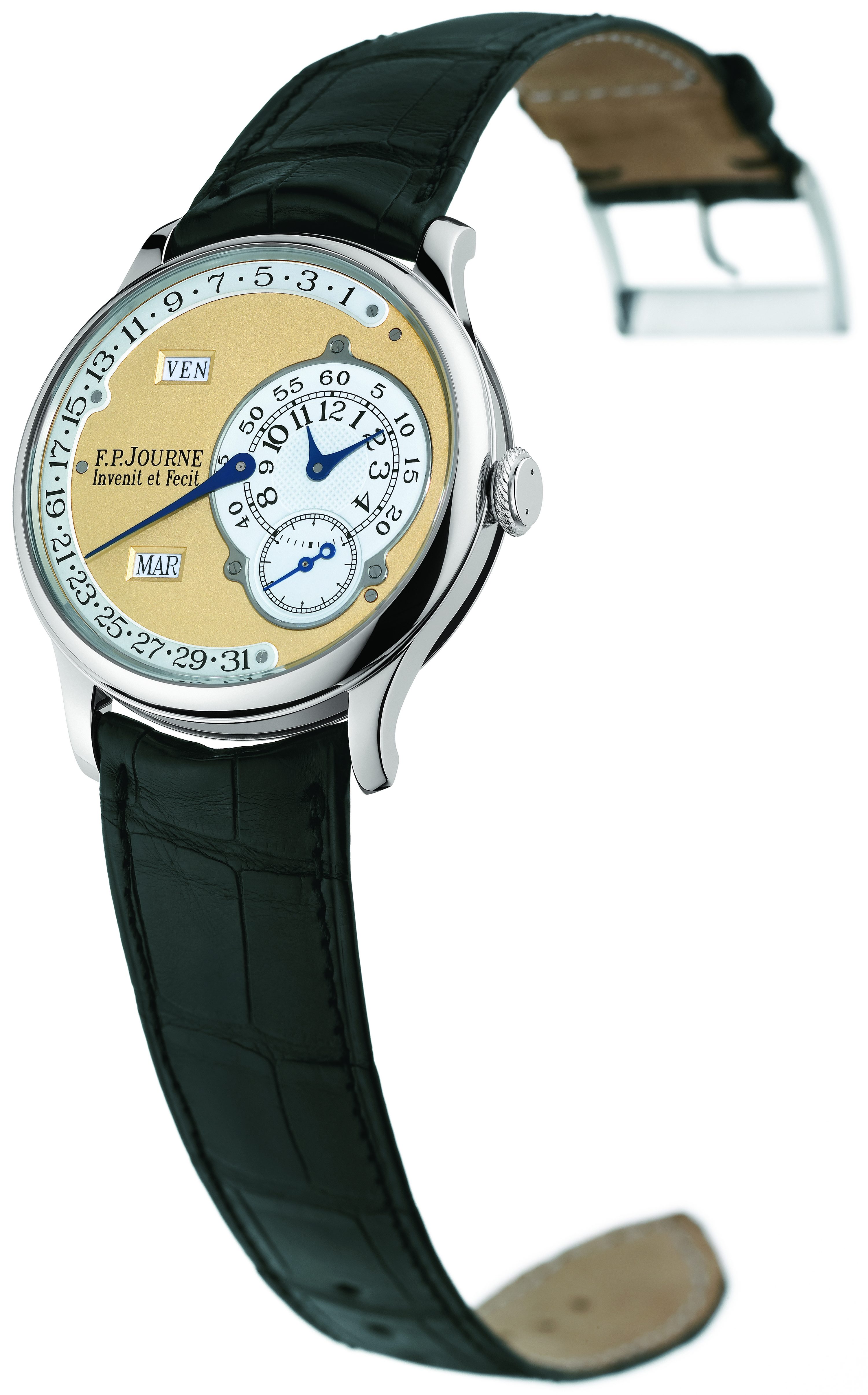
Whilst today F.P. Journe own their dialmakers and casemakers, it was not the case back in the day when Journe was developing this caliber. For Journe, since this caliber would further develop into the addition of complications, it also had to be economical for the brand. Due to this, the caliber had to be developed in order to incorporate complications into it without changing its size; i.e. being able to fit it into the exact same case dimensions; resulting in ordering just one case size to fit many models.
Integrated vs. Modular
When a brand develops a complicated movement they either use an integrated or a modular complication construction.
Modular constructions simply mean that you start off with a base movement and then stack complications over the base as modules. The modules are most often interchangeable/stackable and it is much easier to work with as you develop it, and can just move it along from one base to another. The disadvantages is that while they are easier, the stacking typically results in thick movements and more so, misaligned components. In some watches, the dials don’t work well with the calendar modules or the crowns aren’t centered with the case; clear signs of a modular construction. In other words, some shortcuts work well but not smoothly.
Integrated constructions are when a complication is developed within the works of a movement. The complication here is not stacked over the base but integrated within it. While this form of construction is often coveted and praised by collectors, it is much more difficult to develop and thus, much more expensive. The advantages to such a construction is that for the most part, everything meshes together and you end up with a thinner movement.
Back to Practicality
Mr. Journe is very much against modular constructions and has always compared it to the likes of making a sandwich.
“I don’t make sandwiches, I make watches.”
With the development of the Octa caliber, Journe designed it to allow him to integrate future complications onto the movement without altering its dimensions. The trick lies in a 1mm depth onto the dial-side of the movement where Journe has allowed himself space to integrate any complication within it. The only challenge for him with that decision is in trying to fit a full complication into a 1mm depth, maintaining the overall dimensions of a 30mm diameter and 5.7mm thickness of the entire movement.
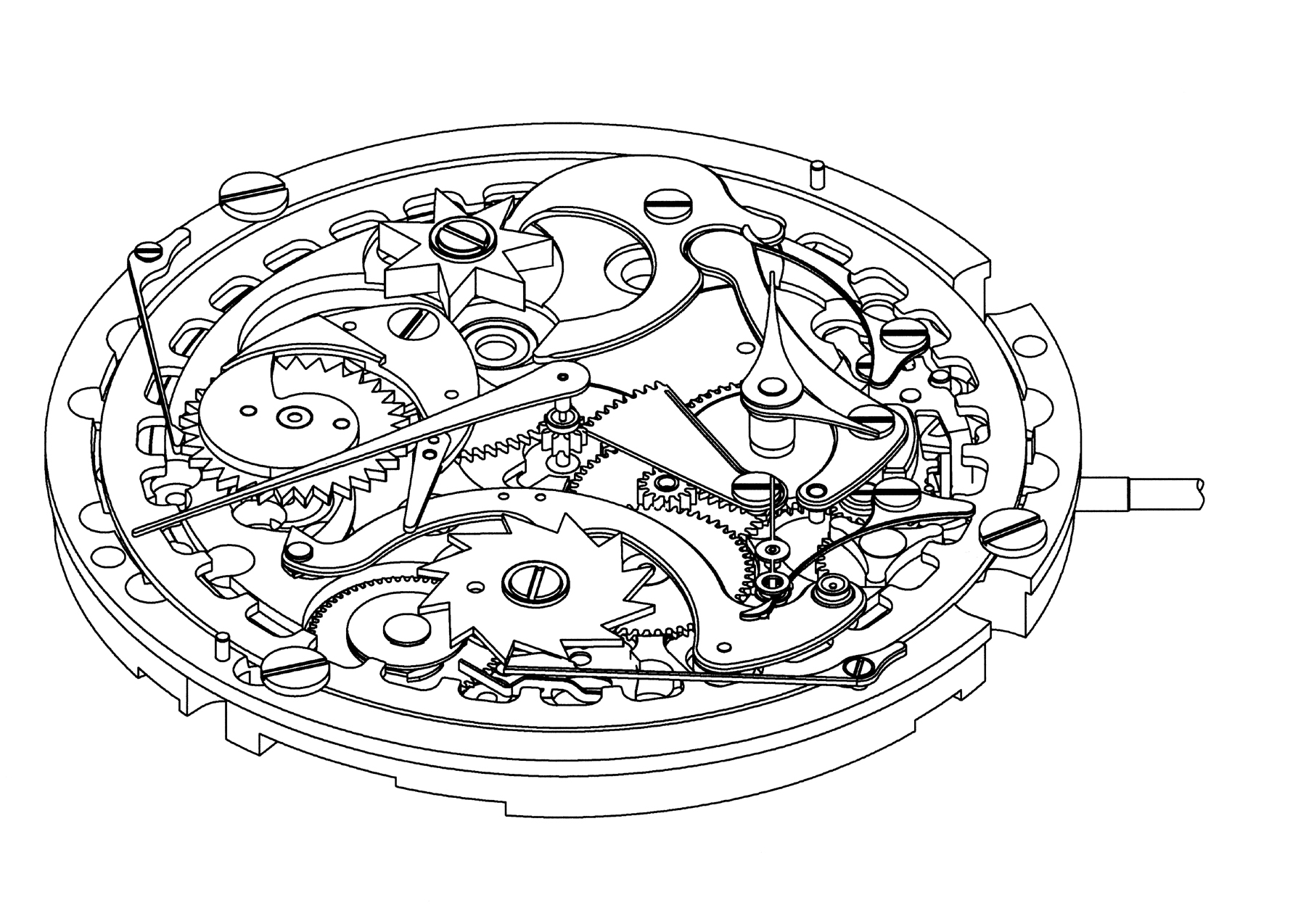
With this, Journe had planned to use this caliber for many future models yet without the need to order his cases in several different dimensions, and the caliber remains practical.
The Off-Centered Rotor
From start to present, the rotor of the Octa has always been a beautifully finished 22K rose gold rotor. Being that the rotor is large and covers up the whole movement, it is difficult to notice sometimes that the rotor is actually off-centered. I’ve always enjoyed the comments of enthusiasts who never seem to notice or ones that suddenly notice, yet immediately grow furious in thinking their watch is faulty.
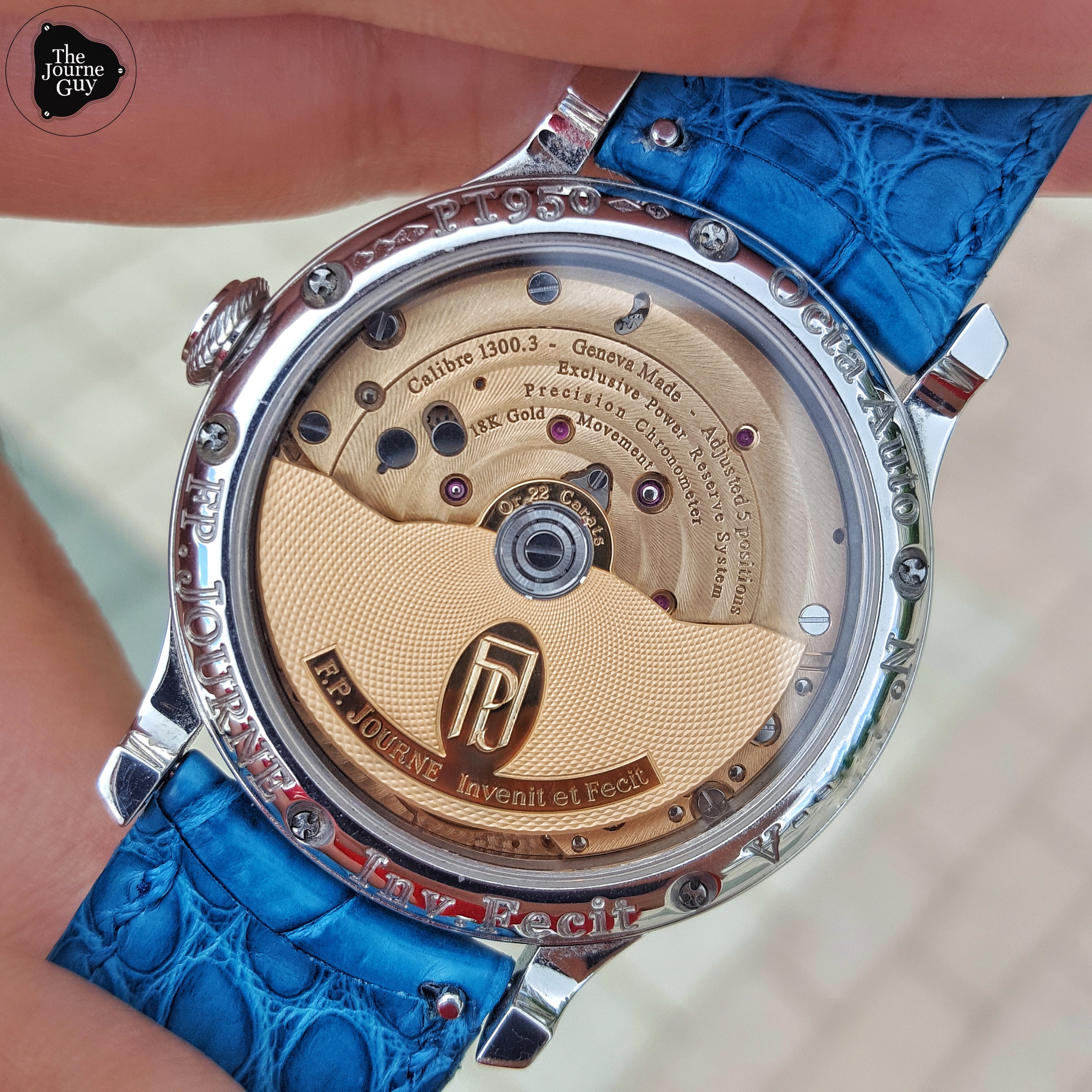
Rest assured, the off-centered rotor was entirely intentional. Keeping in mind that the movement was developed in order to allow different complications to be integrated within it; the idea stemmed from the possibility of having a double-sided display. Honestly, I’m not sure if that’s the correct term but more simply, what if Journe wanted to have a complication on both the dial side of the watch/movement & the caseback? The rumors are that Journe wanted to incorporate some sort of sky chart into the Octa movement but since a competing brand had beat him to it, he abandoned the thought.
Therefore, the off-centered rotor, although subtle, would have given Journe all the space he would need to run a pivot through to the back of the movement, onto which he can add a complication into the back without the rotor blocking his way.
Developing the Caliber
When it was first released in 2001, the caliber was simply referenced as caliber 1300 and it first appeared in the Octa Automatic. With its debut, it became the very first automatic watch with a big date, providing up to 5 days of chronometric timekeeping.
In 2004/2005, when F.P. Journe switched to gold movements, they renamed the caliber as 1300.2, indicating a newer version of the movement.
In 2007, the Octa Automatique Reserve was introduced and with it came a major update to the Octa caliber that later carried over across all future Octa models. Since 2001, the Octa has always utilized a bi-directional winding mechanism which basically means that the rotor would wind the movement while spinning both clockwise & anti-clockwise. The mechanism carried over to caliber 1300.2 as well.
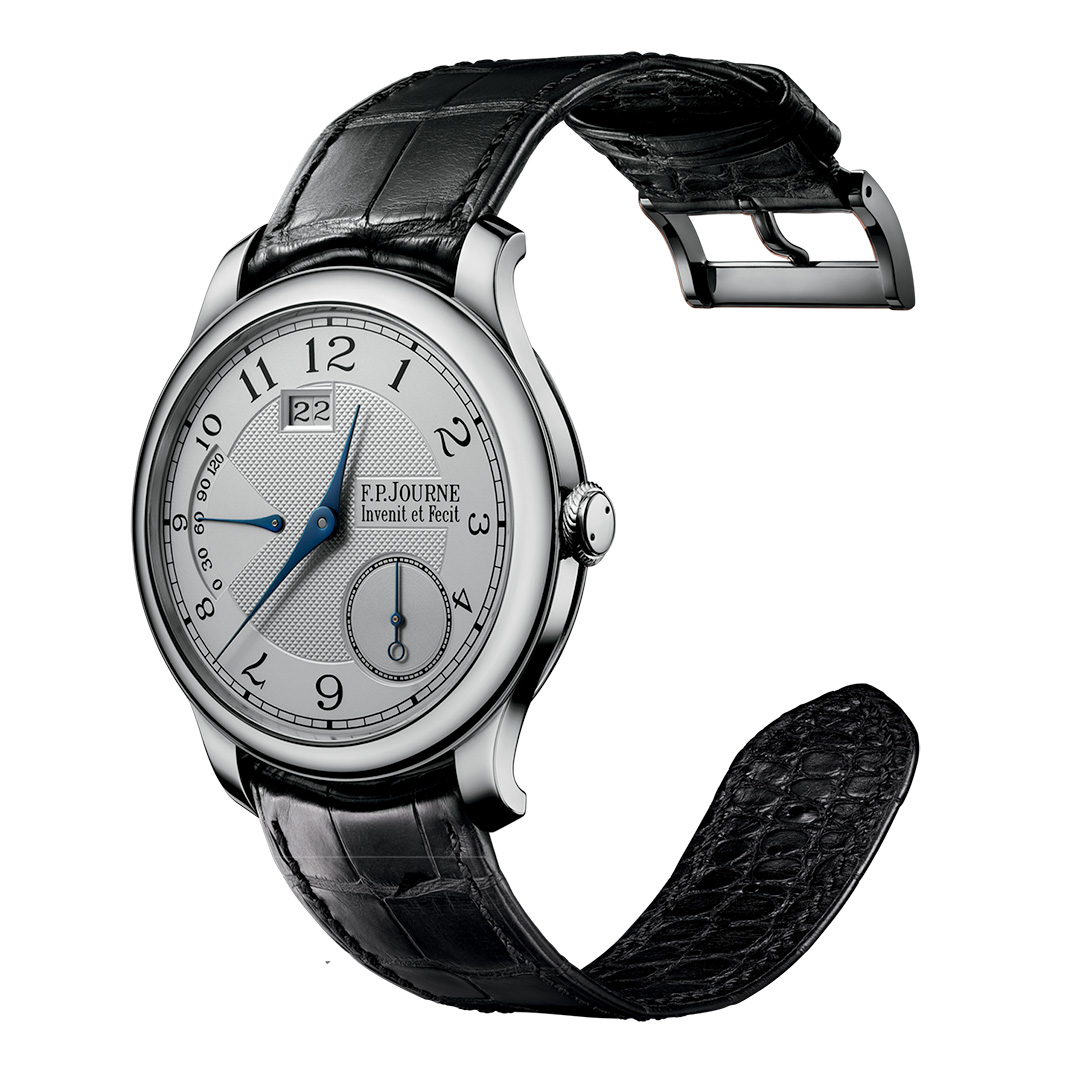
Journe found that one of his close friends, who wore an Octa while at his office, had difficulty in getting the watch’s power reserve up, thus to the watchmaker found a fault with the winding mechanism and further updated it.
In 2007, the updated caliber, now 1300.3, saw the introduction from bi-directional winding to uni-directional winding. The idea is that every minor movement will be used towards winding the movement thanks to a new ball-bearing system that would generally allow the rotor to move in one direction only.
The Models
First released in 2001, the Octa caliber has been used in every automatic Journe since the brand’s founding. The following is a list of the many Octa models that were powered by caliber 1300. Note that whereas the base of the movement remains the same, all complications are integrated into a 1mm space and made specifically for each model.
- Octa Reserve de Marche, Ref. A (2001)
- Octa Chronographe, Ref. C (2001)
- Octa Calendrier, Ref. Q (2002)
- Octa Lune, Ref. L (2003)
- Octa Divine, Ref. D (2003)
- Octa Zodiaque, Ref. Z (2003)
- Octa Automatique Reserve, Ref. AR (2007)
- Octa Automatique Lune, Ref. AL (2007)
- Octa Perpetuelle, Ref. OP (2009)
- Octa UTC, Ref. UTC (2011)
- Octa Sport, Ref. ARS (2012)
- Quantieme Perpetuel, Ref. QP (2013)
- Octa Lune Nouvelle, Ref. LN (2015)
- Octa Divine Nouvelle, Ref. DN (2016)
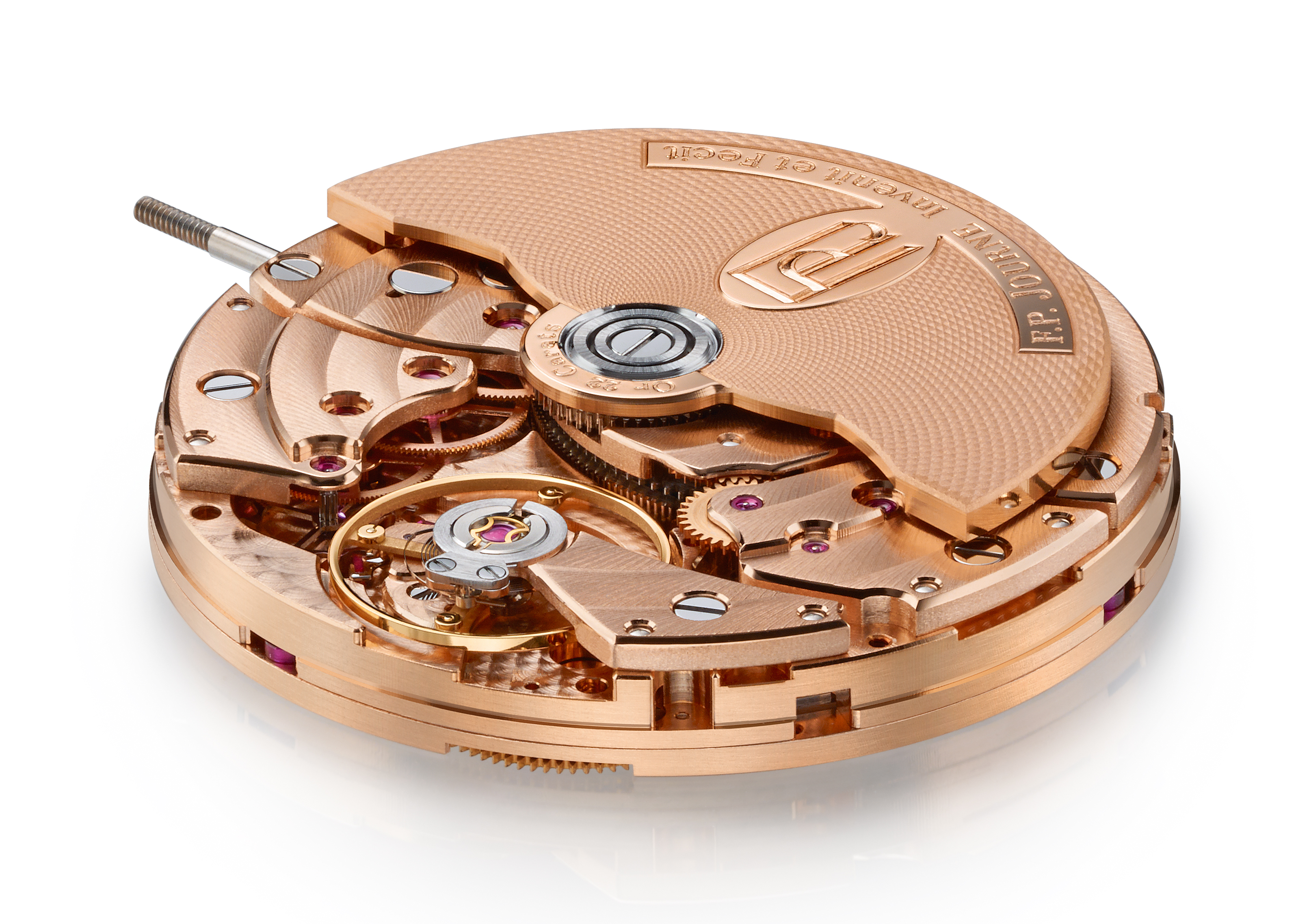
One response to “A Movement That Created a Collection: The Octa”
Just a brilliant read, I follow you on Instagram and have nothing but respect for your knowledge. Thank you!